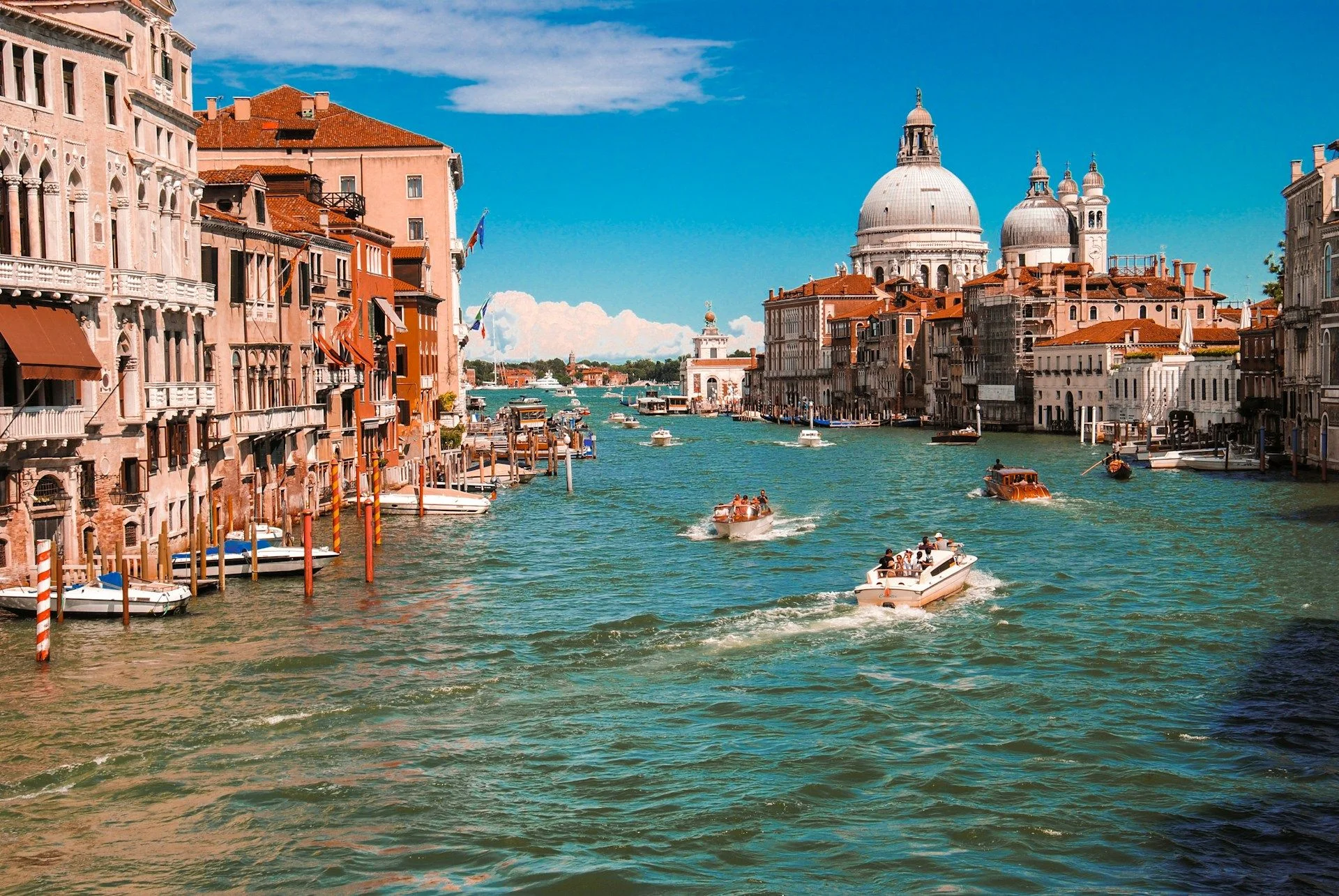Commercial Property Listings in Italy – Investment OpportunitiesProfitable real estate in countryof history and style

Best offers
in Italy
Benefits of investment in
Italy real estate
Historic Stability and Cultural Value
Italian real estate is seen as a secure asset — especially in historic centers and regions with architectural heritage.
Tax Incentives for New Residents
Italy offers favorable tax regimes, including flat-tax programs for foreign residents and real estate buyers.
Strong Rental Market in Cities and Coastal Areas
Consistent demand from tourists and students supports both short- and long-term rental income across urban and resort zones.
Historic Stability and Cultural Value
Italian real estate is seen as a secure asset — especially in historic centers and regions with architectural heritage.
Tax Incentives for New Residents
Italy offers favorable tax regimes, including flat-tax programs for foreign residents and real estate buyers.
Strong Rental Market in Cities and Coastal Areas
Consistent demand from tourists and students supports both short- and long-term rental income across urban and resort zones.

Useful articles
and recommendations from experts
Buy Commercial Property in Italy: Exploring Eurozone Investment Opportunities
Italy’s rich cultural heritage, diverse regional economies, and strategic position within the European Union have made it a magnet for international real estate investors. Whether you’re drawn by the historic charm of Florence, the industrial might of Turin, or the coastal allure of Naples, the country’s commercial property landscape holds vast promise. For those seeking to buy commercial property in Italy, understanding local market dynamics and the nation’s regulatory frameworks can unlock a world of Eurozone investment opportunities with strong potential returns.
At the heart of Italy’s enduring appeal is its strong tourism industry, which serves as a pillar of the national economy. Each year, millions of visitors flock to iconic destinations such as Rome, Venice, and the Amalfi Coast, fueling demand for hotels, restaurants, retail outlets, and leisure facilities. This tourism-driven ecosystem offers compelling prospects for commercial ventures that cater to both high-end and budget travelers, ensuring steady foot traffic in prime locations. Moreover, Italy’s diverse geography—from the snow-capped Alps in the north to the sunny beaches of Sicily in the south—broadens the range of profitable property types, including ski resorts, beachfront hotels, and agritourism sites.
Beyond tourism, Italy’s membership in the European Union confers numerous advantages to foreign buyers. Standardized regulations, established legal protections, and a transparent banking sector all provide reassurance. Although Italian bureaucracy can sometimes be complex, investors who enlist local legal experts and real estate agents generally find the process manageable. Additionally, the Italian government has introduced various incentives in recent years to attract foreign capital, including more straightforward residency options for high-net-worth individuals and property buyers.
Invest in Italian Real Estate: Key Drivers and Sector Highlights
Opting to invest in Italian real estate calls for a nuanced grasp of the country’s multifaceted economy. Despite a reputation for historical charm and a slower pace of life, Italy stands out for its modern industrial hubs, robust fashion and luxury sectors, and flourishing technology and research clusters. Below are the main market drivers shaping commercial property trends:
1. Industrial and Manufacturing Base
Northern Italy, in particular the Lombardy, Piedmont, and Veneto regions, is renowned for its manufacturing and engineering expertise. Cities such as Turin and Milan house major automotive, aerospace, and technology firms. Consequently, industrial parks, warehouse facilities, and R&D centers are often in demand—especially if they’re strategically positioned near highways or major logistics corridors.
2. Luxury Retail and High-End Retail Districts
The nation’s global standing in fashion and design drives a high-end retail segment that’s tough to replicate elsewhere. Milan’s Quadrilatero della Moda exemplifies this exclusivity, featuring flagship stores of world-leading luxury brands. Investors can find stable returns from well-located commercial units, particularly in areas frequented by international shoppers and affluent locals.
3. Hospitality and Food Culture
Italy’s gastronomy sector alone generates significant economic activity, and many tourists visit specifically for the culinary experience. Restaurants, wine bars, and artisanal shops in prime locations—especially in historical city centers—can leverage the country’s reputation for world-class cuisine.
4. Affordable Regional Markets
While cities like Milan and Rome command premium prices, smaller cities or emerging suburbs often offer affordable regional markets with untapped potential. These locales might attract businesses seeking lower operating costs or serve growing local populations. Investors willing to explore beyond the typical tourist corridors can uncover properties that blend affordability with compelling yield prospects.
Commercial Real Estate in Milan: Italy Financial and Fashion Capital
Milan is widely recognized as the country’s financial heart and a global fashion hub. For buyers on the lookout for commercial real estate for sale in Milan, the city’s mix of corporate headquarters, designer boutiques, and a thriving startup scene makes it one of Italy’s most dynamic markets. Whether your interest lies in an upscale retail unit along Via Montenapoleone or a modern office complex in Porta Nuova, Milan’s diverse neighborhoods each offer unique avenues for investment.
1. Business Districts: The city’s skyline is punctuated by contemporary architectural landmarks like the UniCredit Tower and the Bosco Verticale. Commercial spaces in these districts attract tenants from banking, consulting, fintech, and multinational corporations. Investors benefit from established tenant demand and rental rates that mirror Milan’s stature as an international business center.
2. Fashion Quadrilateral (Quadrilatero della Moda): This prestigious shopping district draws affluent tourists and locals to high-end retailers, luxury brands, and exclusive boutiques. Prime retail spaces here can yield impressive returns, albeit at a higher acquisition cost.
3. Creative and Startup Ecosystem: Areas like Tortona and Isola have become magnets for creative agencies, tech startups, and co-working hubs. Investors can tap into younger demographics seeking flexible lease terms and modern amenities aligned with new work paradigms.
While competition in Milan’s commercial sector is intense, rental yields often remain strong relative to asset quality. Moreover, the city is well-connected via high-speed trains and international airports, streamlining travel for both business and leisure. By selecting a strategic location and ensuring your building meets top-tier standards—think energy efficiency, contemporary design, and smart technologies—you can position your Milan property for stable long-term profitability.
Office in Rome: Balancing Heritage and Modernity
While Milan focuses heavily on finance and fashion, Rome stands out as Italy’s political, cultural, and tourism epicenter. For those seeking office space in Rome, the city’s historical grandeur combines with modern administrative functions to create a unique real estate environment. Housing ministries, embassies, and corporate offices, Rome’s market caters to government-aligned tenants, international organizations, and private firms that value proximity to national leadership.
1. Historical City Center
Many office buildings here occupy centuries-old structures, blending antique architectural features with contemporary facilities. Owning commercial space in Rome’s core can offer prestige, although investors must navigate stricter zoning laws and preservation rules. High tourist volumes also support a variety of peripheral businesses, including hotels, cafés, and retail outlets that benefit from office worker foot traffic.
2. EUR District
This planned business district in southern Rome features modern high-rises, broad avenues, and a concentration of corporate and government offices. Properties here often provide larger floor plans and more parking, aligning well with multinational companies or businesses requiring spacious layouts.
3. University Proximity
Areas around Rome’s major universities (e.g., Sapienza or Roma Tre) are fertile ground for startups, research labs, and coworking spaces. These neighborhoods may not carry the historical center’s charm, but they typically offer better affordability and attract a steady stream of young professionals.
Rental yields in Rome can vary significantly based on location and property condition. While established zones may command premium rates, up-and-coming districts could deliver higher returns if gentrification continues apace. As with any historic city, property owners should anticipate renovation costs related to heritage conservation and updating utilities in older structures. Nevertheless, Rome’s role as a UNESCO World Heritage Site and its position as Italy’s political capital ensure consistent demand, especially when quality meets location.
Italy Property Market: Embracing Historical City Center Demand
Despite occasional economic headwinds and bureaucratic hurdles, the Italy property market outlook remains optimistic, particularly in commercial hotspots where enterprise converges with culture. Even amid global fluctuations, Italy’s economy benefits from strong domestic consumption, booming tourism, and thriving export industries—conditions that create resilience in the commercial real estate sector.
1. Historical City Center Demand
Investors are consistently drawn to Italy’s historic cores—iconic cityscapes immortalized in art, film, and global imagination. Unique buildings in these areas often face tighter regulations and higher renovation costs, but the payoff can be substantial. Tourists, expats, and locals alike frequent these enclaves, generating foot traffic that supports diverse commercial offerings.
2. Investment Opportunities Beyond Tourism
While hospitality and retail remain mainstays, newer growth vectors—like renewable energy, co-living ventures, and high-end manufacturing—underscore Italy’s commercial potential. Regions with established industrial clusters (such as Emilia-Romagna for automotives and food, or Tuscany for fashion and crafts) are ripe for specialized commercial developments, from warehouses to design studios.
3. Encouraging Government Policies
Italy has introduced initiatives to attract foreign investment, including tax breaks and simplified procedures for certain property transactions. For instance, the “Superbonus” scheme offers incentives for building renovations that improve energy efficiency. Such policies can lower the cost basis for commercial property acquisitions, driving stronger returns.
4. Key Considerations
• Legal Framework: Partnering with local lawyers is vital to navigate zoning, heritage protection, and labor regulations.
• Financing: Italian banks offer mortgage solutions to foreign investors, though terms can vary. Securing competitive financing often hinges on a well-prepared business plan.
• Cultural Sensitivity: Italy’s storied regions each possess distinct traditions and business practices, influencing property development and tenant relations. Adapting to local cultures fosters smoother operations and long-lasting partnerships.
In sum, the decision to buy commercial property in Italy entails balancing the country’s iconic allure with practical considerations of region, sector, and legal compliance. From commercial real estate for sale in Milan to office space in Rome and beyond, Italy’s vibrant cities offer both aspirational glamour and grounded business fundamentals. By embracing the strong tourism industry, tapping into high-end retail districts, and staying alert to affordable regional markets, investors can position themselves to benefit from the Italy property market outlook over the long haul—securing a foothold in one of Europe’s most historically rich and commercially dynamic nations.
